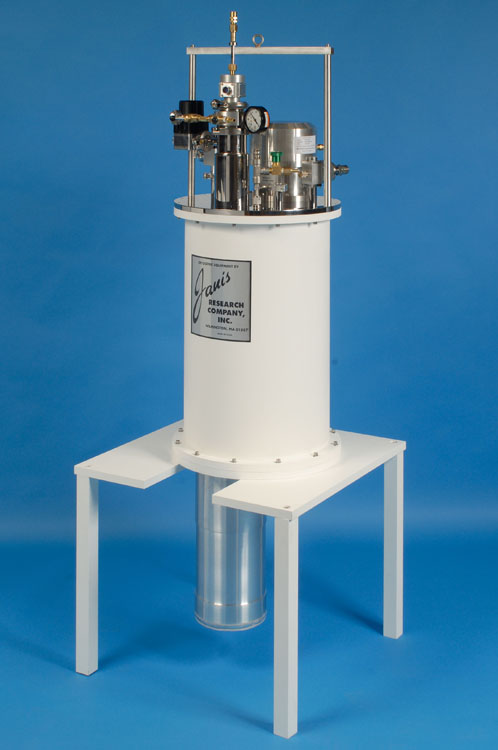1.5 K continuous closed-cycle refrigerator cryostat
A turnkey alternative to liquid helium cryostats
Lake Shore offers a low-vibration pulse tube cryocooler that achieves liquid helium performance using cryogen-free technology and a closed-loop system.
Standard cryostat configuration
The PTSHI-950-LT 1.5 K continuous closed-cycle refrigerator cryostat operates continuously from 1.5 K to 300 K (450 K optional) and is a cryogen-free, turnkey alternative to liquid helium. Featuring pushbutton operation including sample temperature adjustment, this top-loading refrigerator can locate the sample in either static exchange gas or vacuum.
The system offers rapid sample exchange while the refrigerator is operating. The sample is inserted, via a long rod, into a nearly isothermal region of the gas column for cooling. Sample exchange is done by simply removing the sample rod, switching samples on the rod, and reinserting the rod into the cryostat. The entire sequence takes ~80 min.
Capable of achieving 1.5 K in ~9 h, the PTSHI-950-LT 1.5 K has a 50.8 mm I.D. sample chamber (optional to 100 mm) and can be designed to customer specifications. The system allows you to cool samples, devices, and/or equipment without the inconvenience and expense of liquid helium. It can be applied to a broad range of applications in both academic research and industrial R&D, including materials research, magnetic measurements, neutron scattering (see neutron scattering configuration), electrical transport measurements, optical spectroscopy, and spintronics.
PTSHI-950-LT specifications
Temperature range: ~1.5 K to 300 K (500 K optional)
Initial system cooldown time: ~9 h to 1.5 K
Sample change time: ~80 min
Cold head: pulse tube cryocooler
Sample environment: vacuum or static exchange gas
Specifications subject to change without notice.

Neutron scattering cryostat configuration
The PTSHI-950-LT can be configured for neutron scattering. Modular tails can easily be exchanged for different experimental requirements. (See image above.)


